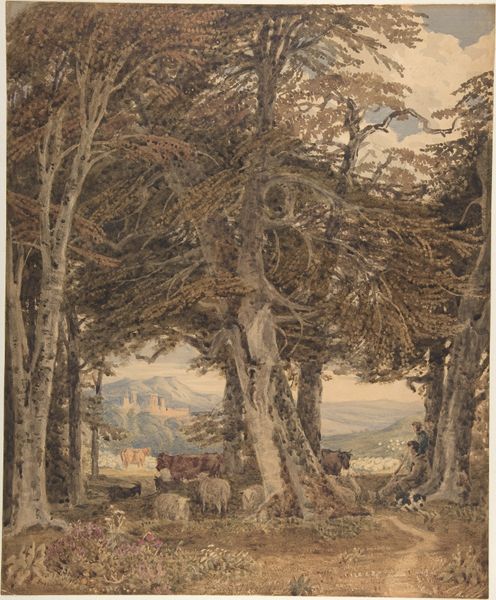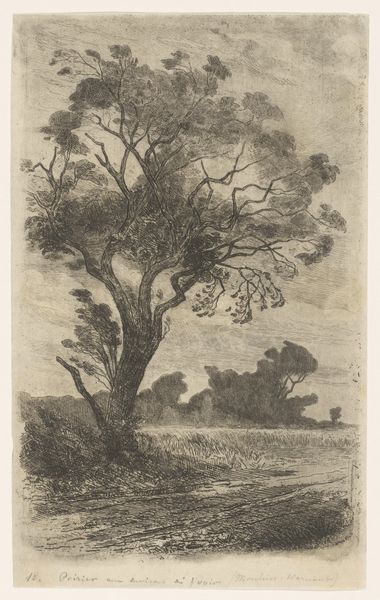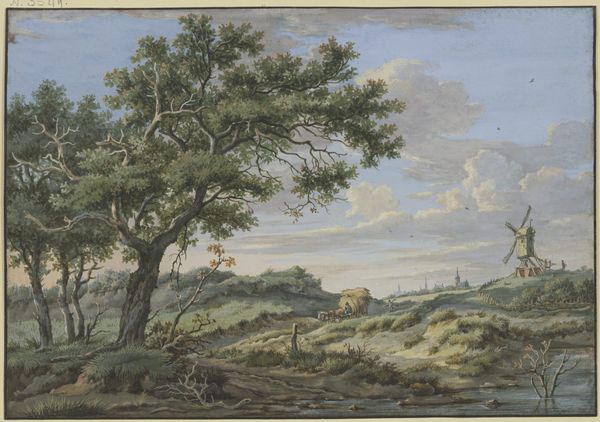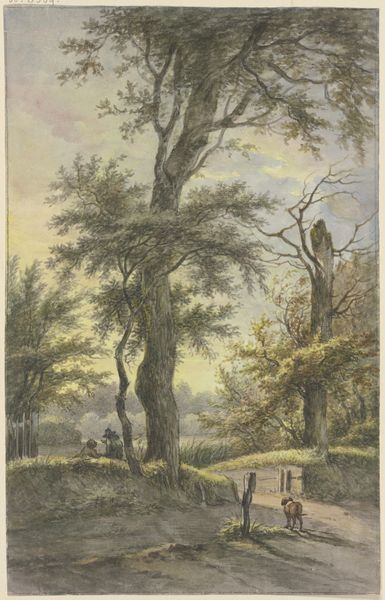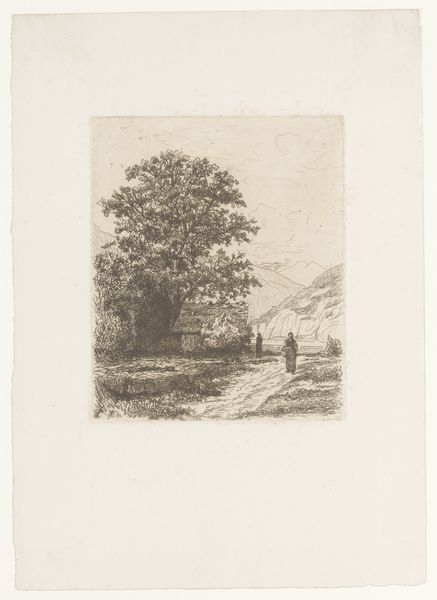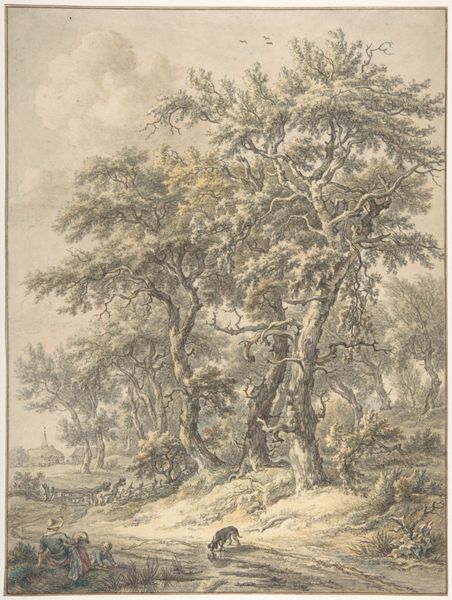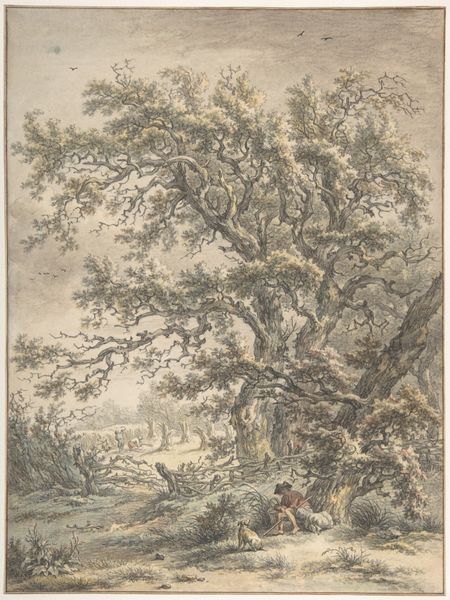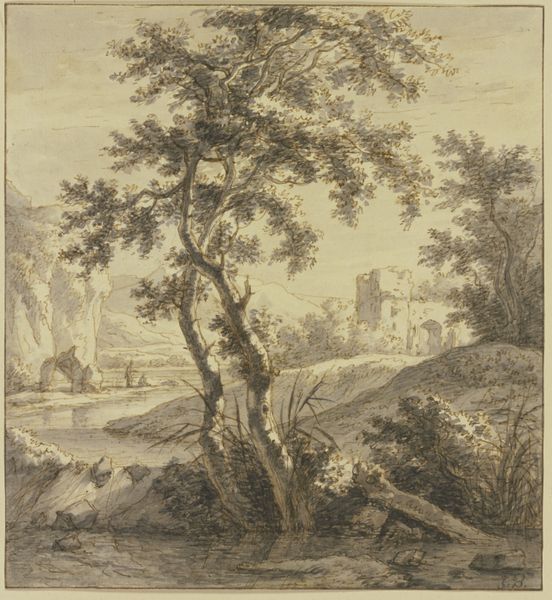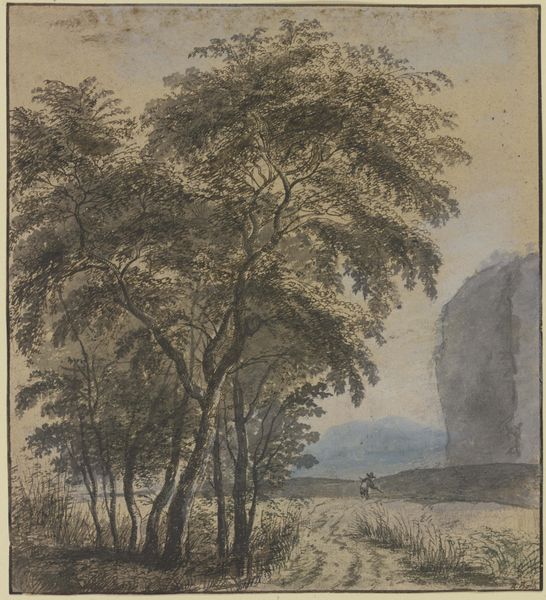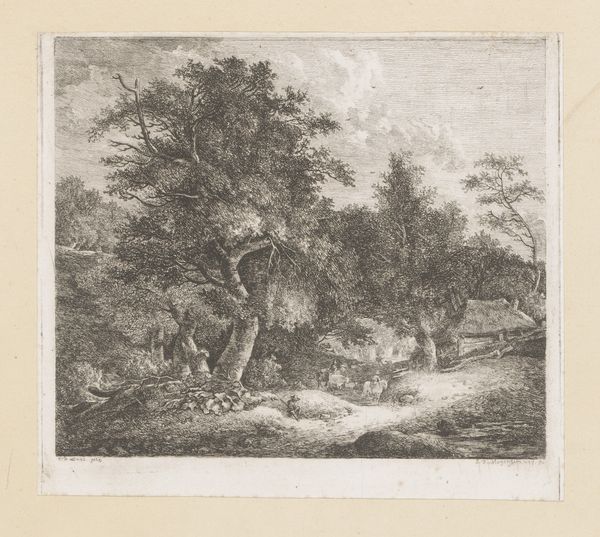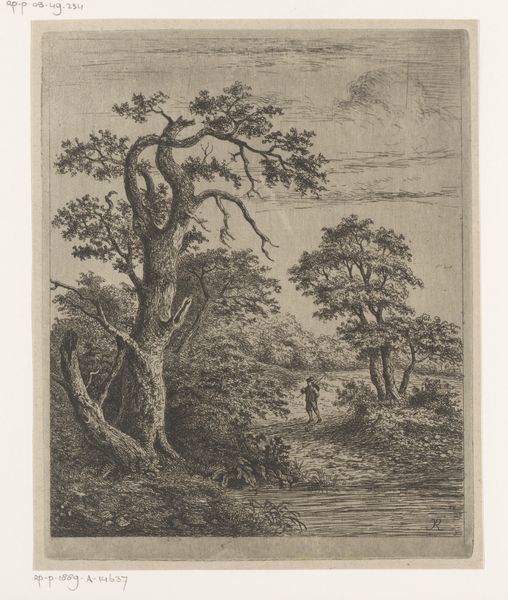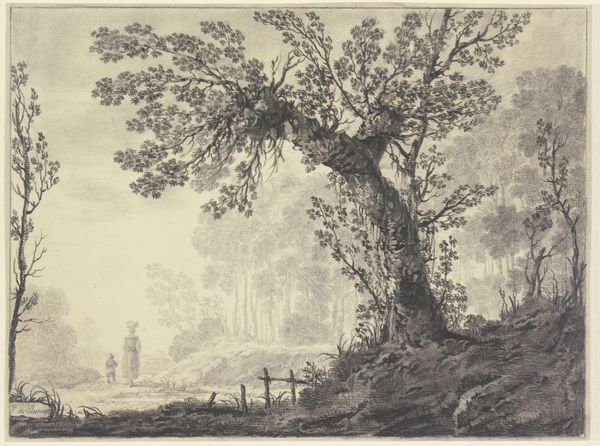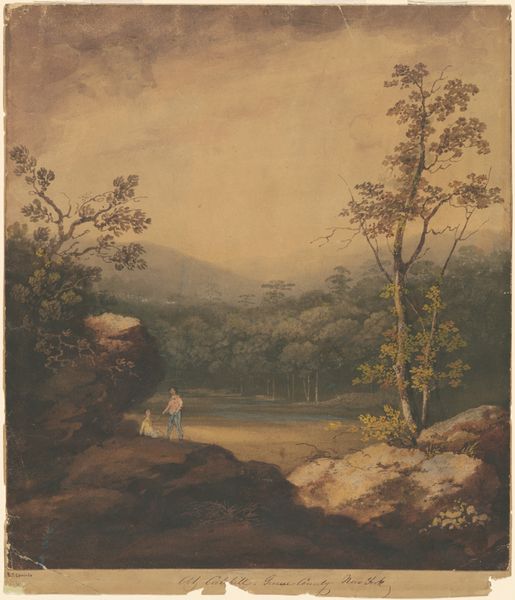
drawing, plein-air, watercolor
#
drawing
#
water colours
#
plein-air
#
landscape
#
figuration
#
watercolor
#
coloured pencil
#
romanticism
#
watercolor
Dimensions: height 191 mm, width 185 mm
Copyright: Rijks Museum: Open Domain
Curator: We’re looking at "The Tree with Many Birds" by Johannes Tavenraat. It was created sometime between 1819 and 1881 and resides here at the Rijksmuseum. It's rendered in watercolor and coloured pencil, evoking a sense of being painted en plein-air. What's your initial response? Editor: A gathering dusk, definitely somber. The large tree looms, and the birds swirl above like escaping thoughts or memories. The figures in the foreground seem small, almost swallowed by the landscape. Curator: Precisely, there's an undeniable sense of scale at play, but let's delve a little deeper into that ‘somber’ reading. Considering the era, we’re at the cusp of massive social upheaval. The positioning of those figures, seemingly excluded, almost in shadow, hints at class divisions, at the marginalized struggling for visibility amidst a rapidly changing social structure. Editor: Yes, the birds, particularly, pull at me. They represent the soul, freedom, aspiration… their departure en masse could signify societal unrest. But the tree! In many cultures, trees embody strength, wisdom, the interconnection of life – roots to sky. A haven even? Curator: Potentially, but that's where it gets complex. While the tree could offer shelter, its darkness and overwhelming size can also represent oppression, the entrenched power structures weighing down those figures below. Remember, landscape wasn't just backdrop then; it was a battleground for ideas about ownership, labour, and belonging. Editor: A valid point. Thinking about the Romantic period though, perhaps it speaks to something deeper—the sublimity of nature overpowering mankind? The human spirit confronted by something ancient and immense? Curator: I think those two concepts aren't mutually exclusive. What Romanticism revealed to us was how people understood those issues of power through those lenses of "natural beauty." Here, this "beautiful" tree also tells of displacement. I wonder, if these working-class families could speak, what narratives of resilience and resistance might they provide about their social and natural environments? Editor: The sheer amount of readings from this watercolor drawing of Tavenraat are compelling. It invites a meditation of personal memory and the weight of a complicated cultural past. Curator: It's a powerful reminder that art acts as a mirror and a lens, simultaneously reflecting and refracting the realities of its time, while still speaking across generations.
Comments
No comments
Be the first to comment and join the conversation on the ultimate creative platform.
